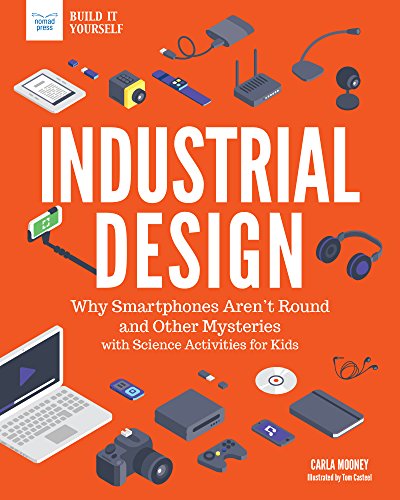This post contains affiliate links. As an Amazon Associate I earn from qualifying purchases
What is industrial design? How does it affect our everyday lives?
Why do microwaves open with a swinging front door? Why aren’t smartphones round? Why do drivers sit on the left in the United States?
Industrial design is the study of the design process behind the products we use every day, from blenders to school buses to laptops. In Industrial Design: Why Aren’t Smartphones Round and Other Mysteries with Science Activities for Kids, readers ages 10–15 engage in and learn about the engineering design process from its earliest beginnings when individuals designed and crafted their own tools to today, when engineers work to find the best design for products that are then manufactured in bulk by automated machines.
Why does design matter? It’s the design of a product that increases or decreases its chances at success. If the design of your phone isn’t quite right and you feel uncomfortable or frustrated every time you use it, you probably won’t buy that model again. Engineers consider the user experience of every product they design to ensure that users have the best experience possible. Good design combines the right materials, colors, details, and form to make a person want to buy and use a product. A well-designed product is easy to use and does what it is meant to do.
In Industrial Design, readers practice their own engineering design skills using the engineering design process and learn how to create useful, aesthetically pleasing designs for a variety of products. They learn about the history of industrial design and the transition from craft-based design to mass production. Through fun science and engineering projects, they explore the steps of the industrial design process including brainstorming, idea sketching, technical drawings, creating models and prototypes, and product testing. Like a good designer, they learn how to evaluate products for function, usability, ergonomics, aesthetics, and green design.
Throughout Industrial Design, inquiry-based activities, essential questions, links to online primary sources, and an extensive engineering glossary all promote critical and creative thinking and serve to highlight the importance and beauty of engineering design and the role it plays in our world.
This post contains affiliate links. As an Amazon Associate I earn from qualifying purchases
